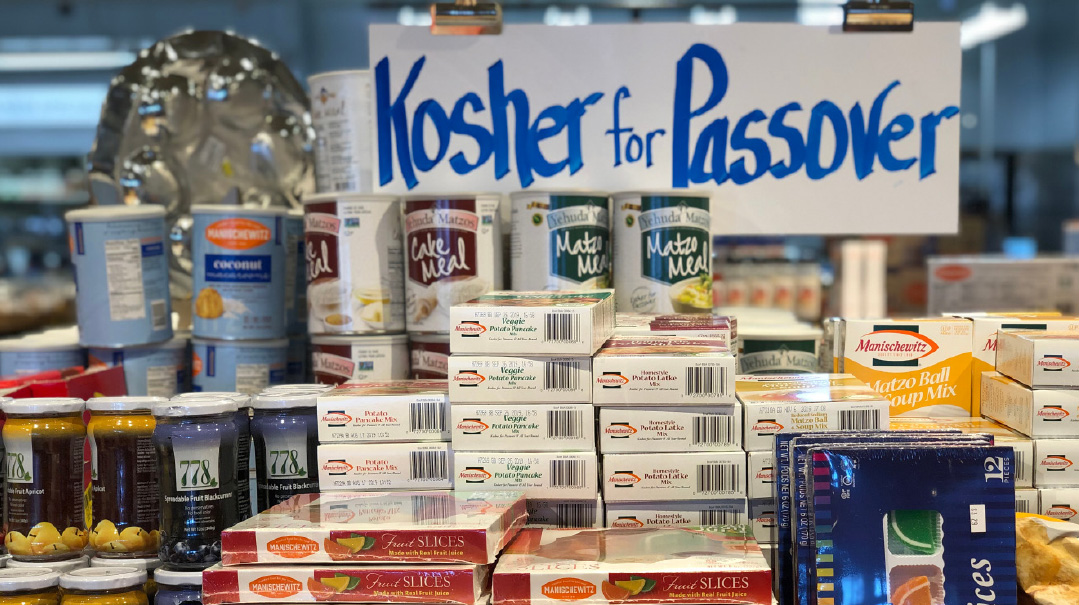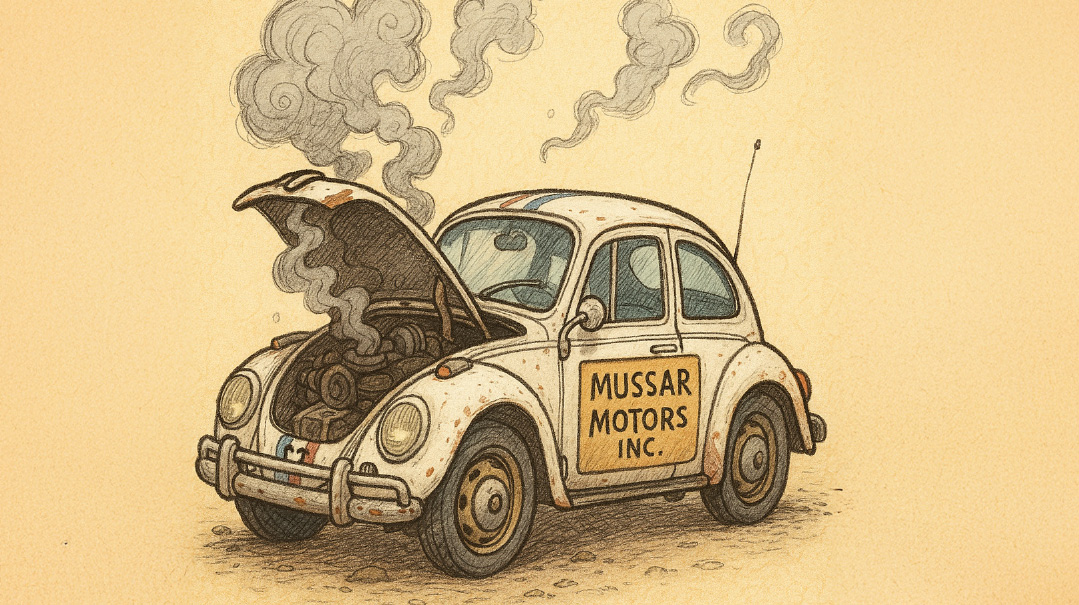Manischewitz Man

Of all the regalim, it’s Pesach that draws the most inspiration and perspiration from religious Jews

F
orgive me, but I can’t help it. Pesach is here, so once again I’m thinking about the supermarket Jews.
You know the type. The ones who don’t necessarily look Jewish, but in the run-up to Seder night, flood the aisles stocking up on Pesach basics.
In America, you might call them Manischewitz Man. You’ll find them in Walmart or Target, browsing the matzah and grape juice aisle, and puzzling over those old-fashioned fake fruit candies. If you happen to meet, they’ll bagel until you know that they’re a member of the tribe.
Being from England I think of them as Palwin People. They fill the trolley with Anglo-Jewry’s time-honored sweet kiddush wine emblazoned with the legend Palwin No. 10.
This is a wine so hoary and tradition-bound that most devotees have no idea that it stands for the Palestinian Wine Company, founded in 1898. (They also don’t know what the No. 10 means. Whatever happened to the first nine? Is it like Heinz’s baffling “57 varieties” ketchup label, in which Mr. Heinz labored over his product 56 times, until he struck red?)
(Originally featured in Mishpacha, Issue 1057)
In case you don’t do Yom Tov shopping in general supermarkets, Manischewitz Man and Palwin People make it easy for you. Conveniently, they come to heimishe stores such that you need not venture further than the local pickle aisle to witness messianic unity.
Anyway, I have a confession to make: I love these Jews. The sight of them warms my heart. I love watching them shop, groaning over the insane prices, but then still piling up their trolleys.
Because this is what they do. They make Pesach, they buy the ingredients for matzah brei, they’ll have a Seder with the family. That’s what their parents did, and that’s what they want to pass on to their children.
There in the supermarket aisles, you can see that process of education in action. The boys or girls who go to public school aren’t just shopping; they’re learning, being told things that may surprise you. Such as the fact that their family who doesn’t keep kosher during the year has separate meat and milk dishes for Pesach.
Why do I love watching these scenes? Like a conservationist’s heart might ache over the vulnerable beauty of an endangered species, there’s a beauty in the authenticity of these Manischewitz Jews; a sense that for one more generation, they’re holding on.
Every Pesach I come back to the same stats about the stunning proportion of secular Jews who make a Seder. And every year, I wonder anew at the persistent power of Pesach. Even those who go to shul on Rosh Hashanah and Yom Kippur are generally shuled-out on Succos. Shavuos is an unknown. But Pesach marches proudly on.
Why is that?
My father, Rabbi Jonathan Guttentag, explains the phenomenon by referencing the gemara (Shabbos 130a) that every mitzvah that the Jewish people accepted with joy — such as bris milah — is still being performed joyfully, millennia later.
The joy with which our forefathers throughout the ages kept Pesach — lovingly going the extra mile for a physically taxing Yom Tov — has communicated itself to their disconnected descendants.
Rav Yisrael Salanter might have suggested something else to cover the facts: a metaphysical version of the butterfly effect. “When a Jew in Vilna desecrates Shabbos,” he is reputed to have said, “a Jew in Paris marries out.”
Since the Jewish people is one interconnected entity — one giant soul — the elevation that we bring to the holiest times of the year communicates itself to the rest of the Jewish people. If we ourselves are transformed over Rosh Hashanah and Yom Kippur, is it any wonder that the ripple effect is felt on distant shores?
Of all the regalim, it’s Pesach that draws the most inspiration and perspiration from religious Jews. Is it any wonder that non-frum Jews still treasure it?
But enough about others. The fact that Pesach is kept by such incredible numbers may explain something about our own experience. Perhaps it’s due to all those millions of Manischewitz Jews that Pesach is the rock-solid foundation of our own faith.
For the last century, we’ve grown so used to the fact that a majority of Klal Yisrael is secular that we struggle to comprehend a world that wasn’t so.
The Manichaean division into us and them breaks down very neatly in our minds. We’re fortunate, and they, nebach, haven’t seen the light.
The truth is that we’re also a nebach. Behind our ghetto walls, this unnatural state of Jewish secularism hits us just as hard. When millions of Jews are alienated from Torah, we’re all a shadow of ourselves. Klal Yisrael is like a giant on life support, and without our secular brethren we ourselves are lacking.
That concept is the ABC of Jewish peoplehood. It lies at the heart of the halachic idea of arvus — mutual responsibility for mitzvos that allows one person to make kiddush for another. It explains how each person can fulfill all 613 mitzvos, despite the fact that some of that total apply only to a Kohein or a king.
It’s also the basis of the odd math of Jewish war-making. Parshas Bechukosai tells us that in times of success, five of our soldiers will pursue 100 of the enemy, and 100 of ours will defeat 10,000 of theirs.
Rashi notes that according to the 1:20 ratio of the first sum, 100 Jews should only be able to overcome 2,000 of the enemy — from whence the quantum leap?
“There is no comparison between when a few observe the Torah and when many observe the Torah,” is Rashi’s famous formulation. In other words, the spiritual power of the Jewish people isn’t linear — it’s cumulative.
Perhaps that’s why we are fortunate to feel an extra something on Pesach — why the Seder night can be such a nuclear-charged experience.
Because all year round, we live on a starvation diet, our own spirituality dulled by the fact that only a small minority of the Jewish people are on board with the program.
But on Seder night, we sit down with the vast majority of Klal Yisrael. Who can fathom the awesome spiritual voltage of all those millions of extra Jews?
So this year, like every year, we’ll sit down for the Seder, and so will the Manischewitz Jews. For one tantalizing night a year, it’s not us and them. It’s just one supercharged entity called the Jewish nation.
(Originally featured in Mishpacha, Issue 1057)
Oops! We could not locate your form.







